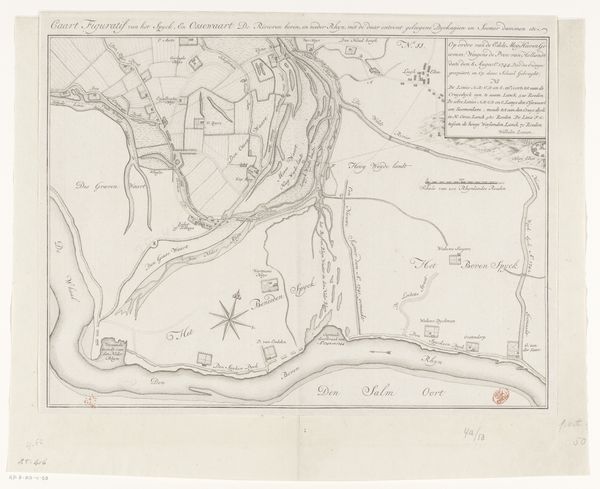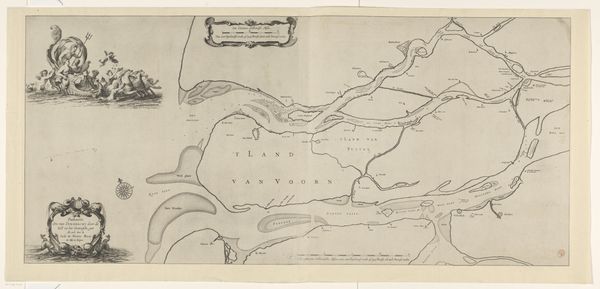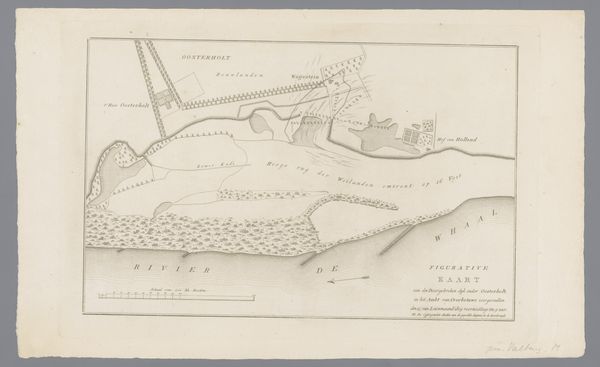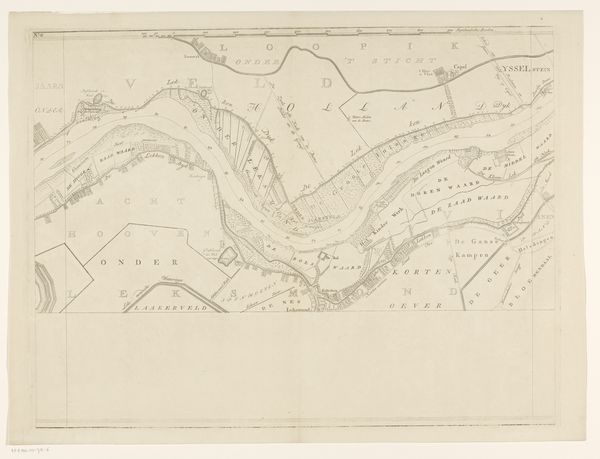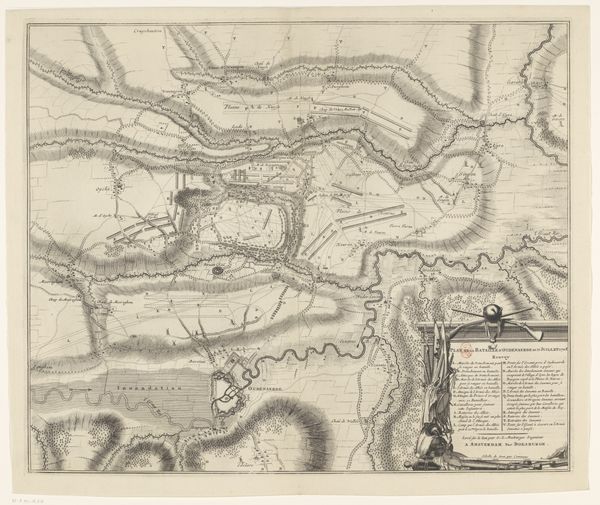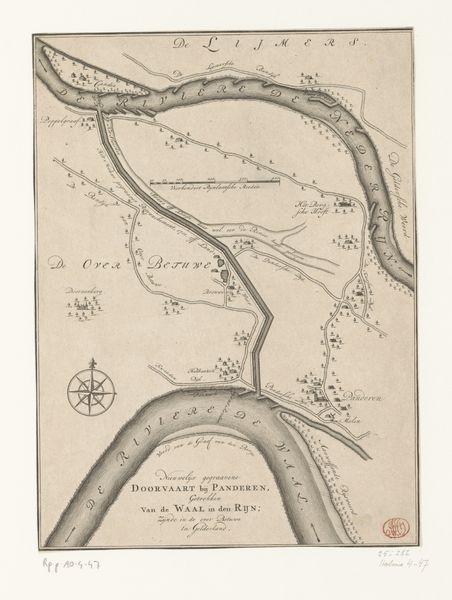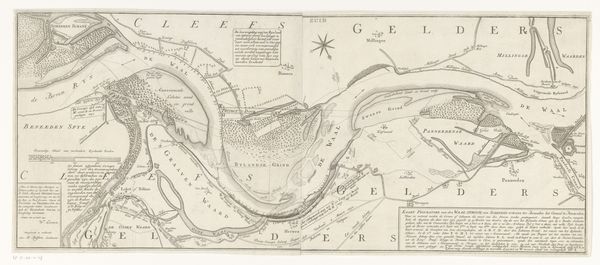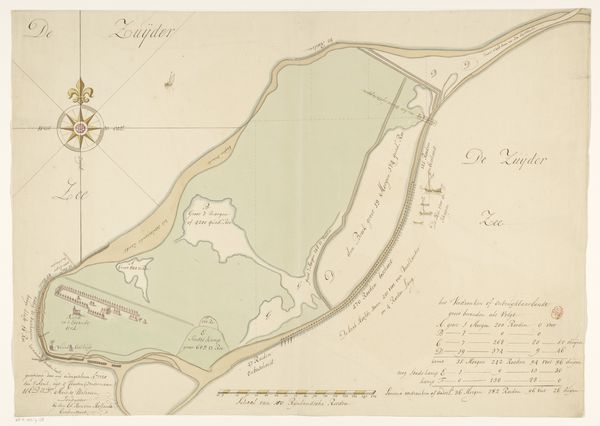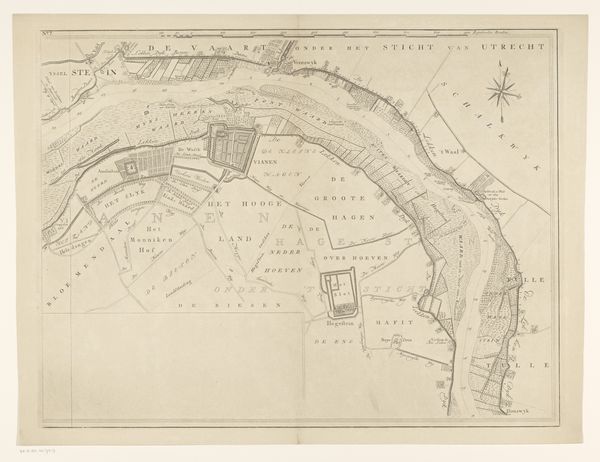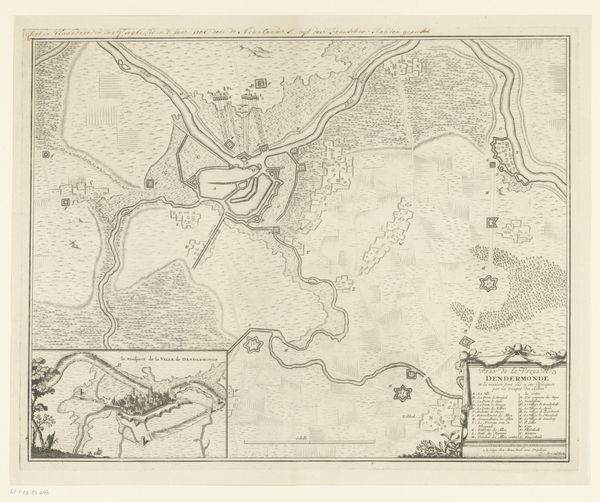
print, engraving
#
baroque
# print
#
landscape
#
cityscape
#
engraving
Dimensions: height 125 mm, width 338 mm
Copyright: Rijks Museum: Open Domain
Curator: Let's consider this "Vestingplattegrond van Stevensweert," a cityscape made by Nicolaes van Geelkercken, created sometime between 1653 and 1672. It's currently housed in the Rijksmuseum. What are your first thoughts? Editor: My first impression is one of careful calculation. The rivers twist and turn around what seems to be a very imposing central fortress. I find the almost obsessive level of detail strangely calming. Curator: It is an engraving, after all, a painstaking process. Consider the societal function, too. Cityscapes such as these were not simply art. They were pragmatic tools for governance and military strategy. Who held power, who commissioned such works, and who were meant to see and use it? The lines denote far more than geographical fact; they demarcate ownership and control. Editor: And I think the very geometry employed serves that purpose. That central fortress – what does that particular shape signify, those precise angles? It's clearly meant to evoke impregnability, dominance. Are we meant to feel safe looking at it, or warned? It speaks of calculated power, almost coldly executed. Curator: Certainly. These fortifications weren’t merely symbolic. Their specific construction reveals the knowledge base, the material resources, and even the specific labor processes needed to construct such a space in the early modern era. We can explore this work through that particular intersection of artistry and artisanal practice. Editor: I suppose those starburst patterns also work to instill a kind of civic pride in the people, despite perhaps the implied military control. It certainly shows progress and safety, in its way. Curator: Exactly. Understanding the materials—the ink, the paper, the printing press—reveals how information was circulated, standardized, and ultimately, how this "Vestingplattegrond van Stevensweert" took shape within and impacted its historical era. Editor: It all resonates outwards from the centre point – that singular fortress, visually expressing how power impacts and influences the surroundings of that period. This map has really given me insight to a forgotten space and era, with stories that remain, buried between the linework. Curator: And by viewing that landscape through a historical, artistic and mechanical perspective, we also unearth forgotten stories embedded in the means and the method that the print reveals to us.
Comments
No comments
Be the first to comment and join the conversation on the ultimate creative platform.
